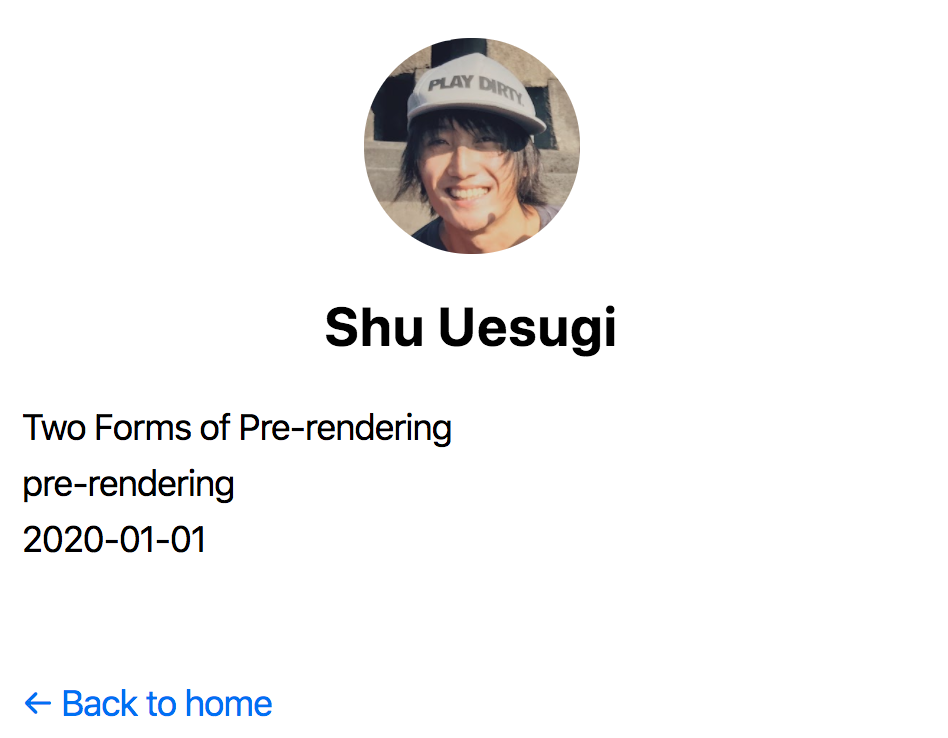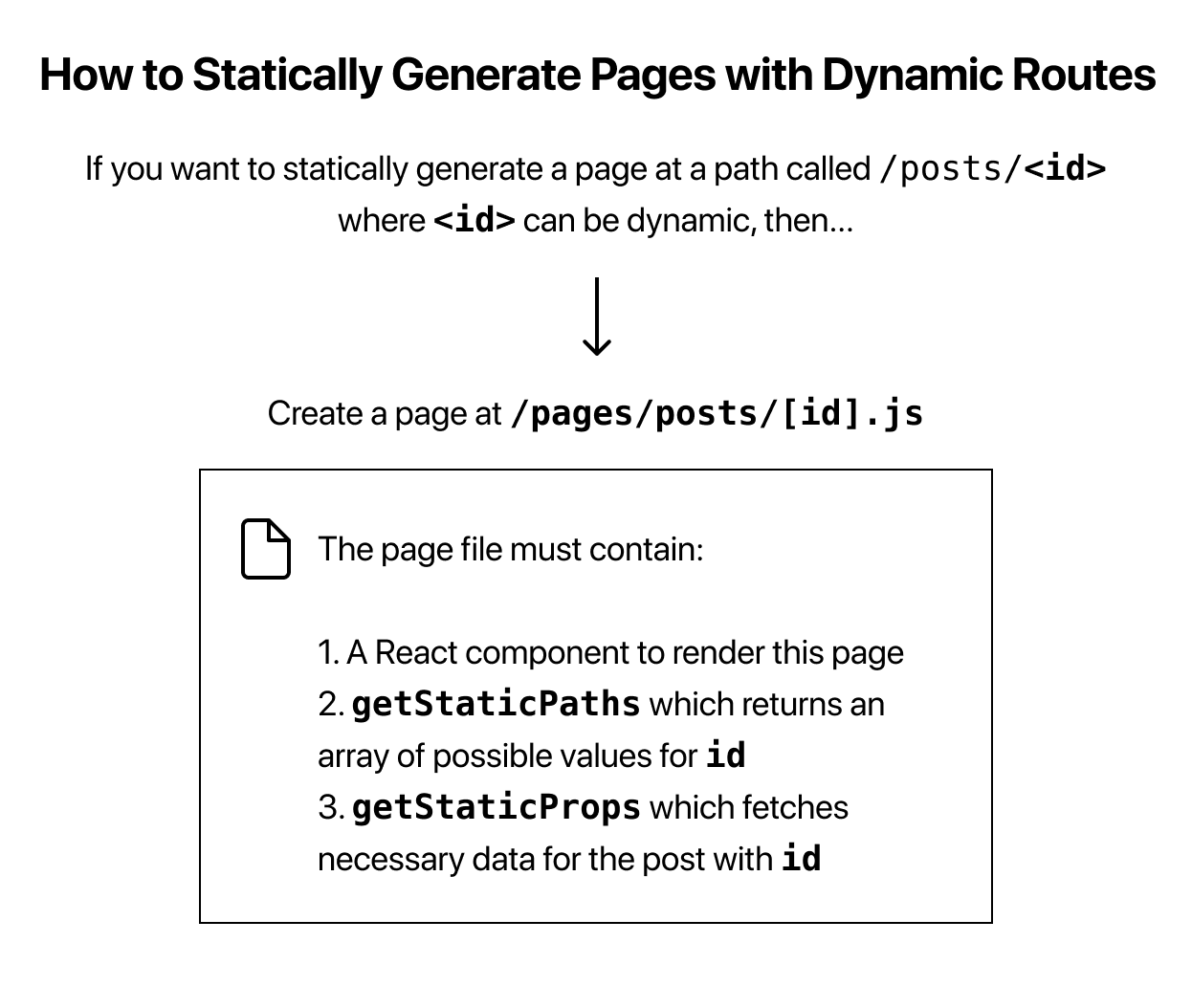基礎觀念
建立你的第一個應用程式
SEARCH ENGINE OPTIMIZATION
- Introduction to SEOCrawling and IndexingRendering and RankingPerformance & Core Web VitalsImproving your Core Web Vitals
- Lighthouse
- Image Optimization
- Dynamic Imports
- Dynamic Imports for Components
- Optimizing Fonts
- Optimizing Third-Party Scripts
EXCEL
動態路由
實作 getStaticProps
我們需要使用 id 來抓取資料,並渲染文章內容。
為了達到此目的,我們打開 lib/posts.js 此檔案,並把 getPostData 函式放到最底下。 它會根據 id 回傳文章資料:
export function getPostData(id) { const fullPath = path.join(postsDirectory, `${id}.md`); const fileContents = fs.readFileSync(fullPath, 'utf8'); // Use gray-matter to parse the post metadata section const matterResult = matter(fileContents); // Combine the data with the id return { id, ...matterResult.data, }; }
再來打開 pages/posts/[id].js 用下面的程式碼:
import { getAllPostIds, getPostData } from '../../lib/posts'; export async function getStaticProps({ params }) { const postData = getPostData(params.id); return { props: { postData, }, }; }
來替換掉這一行:
import { getAllPostIds } from '../../lib/posts';
此文章頁目前在 getStaticProps 當中使用 getPostData 取得文章資料並以 props 形式回傳。
現在,讓我們更新 Post 組件來使用 postData。 在 pages/posts/[id].js 中用以下的程式碼來取代導出的 Post 組件上方:
export default function Post({ postData }) { return ( <Layout> {postData.title} <br /> {postData.id} <br /> {postData.date} </Layout> ); }
大致就是這樣!可以試試到以下網站看看結果:
你應該要能夠看到每個頁面的文章資料:

做得好!我們成功產生了動態路由。
好像哪裡出錯了?
如果你遇到了錯誤,確保你的檔案有以下正確的程式碼:
如果你還是哪裡有問題的話,可以到 GitHub Discussions 社群進行詢問。如果你可以將你的程式碼推送到 GitHub 並在社群中放上你的連結讓其他人可以協助你,對於解決問題會非常有幫助。
總結
沒錯,這是我們目前完成的部分的圖像化總結:

我們還沒談到部落格 markdown 內容。 我們會在下一個階段來做。
小試身手:
getStaticProps({ params }) 的 params.id 要如何知道鍵(key)的名稱是根據 id 來變動?
